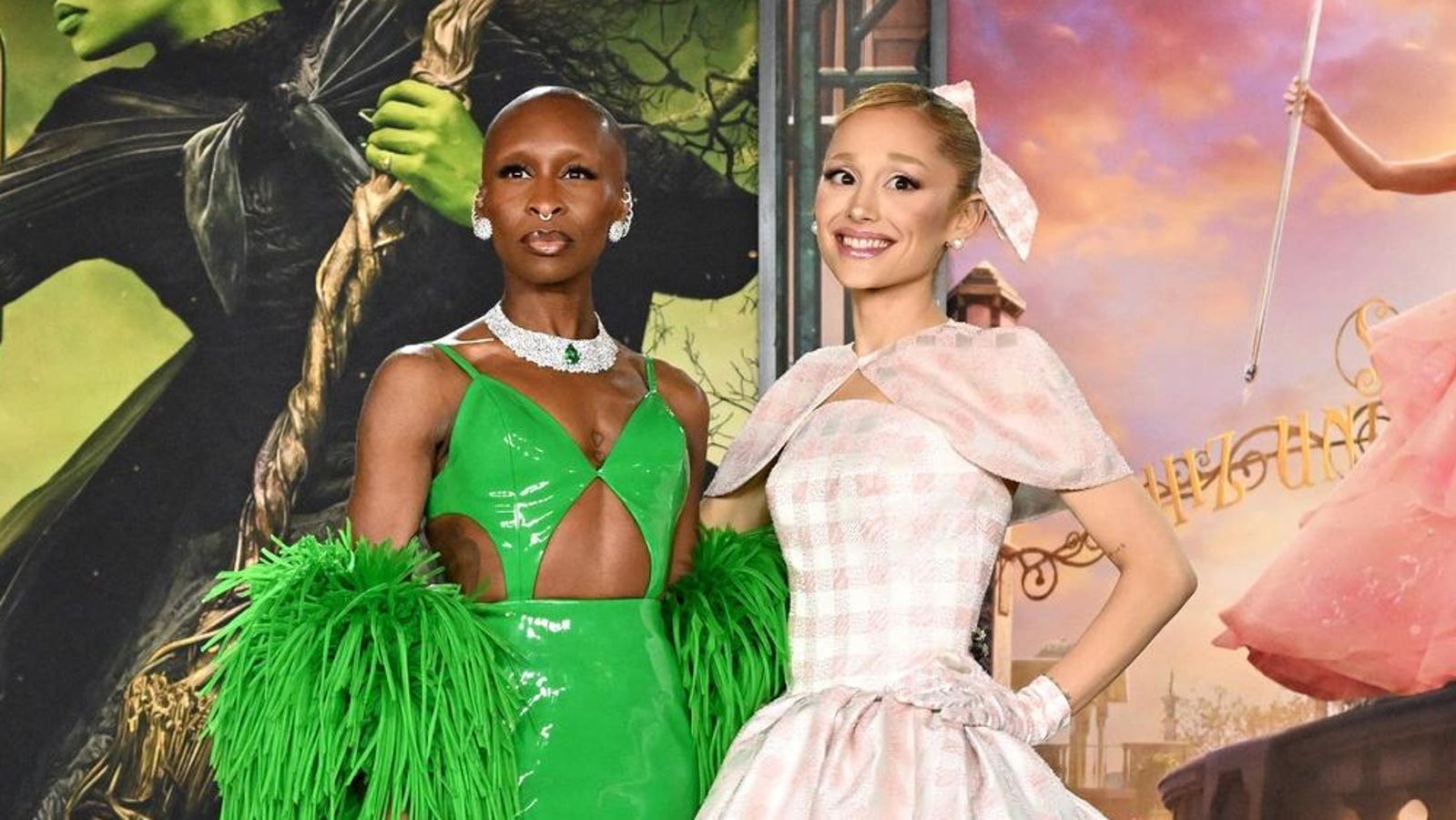Diversity and Inclusion (DEIA)
Gender-Inclusive Films Outperform at the Box Office, Study Finds

ReFrame, a joint initiative by Sundance Institute and WIF (formerly Women In Film Los Angeles), aims to promote gender equity in the screen industries. The organization introduced the ReFrame Stamp, which is awarded to films with gender-balanced teams, including production, crew, and actors. According to a new study by IMDbPro, films with gender-balanced teams tend to perform well at the box office.
Box Office Success of ReFrame Stamped Films
The study found that ReFrame Stamped films within the top 100 at the worldwide box office earned an average of more than double the non-Stamped movies on the list, with $293 million gross vs. $117.8 million. Inside Out 2 and Barbie, both Stamped films with female leads, topped the year’s domestic and worldwide box offices.
Top Films of 2024 Have Gender-Balanced Teams
The top-grossing movie of 2024, Inside Out 2, received the ReFrame Stamp, while Wicked, another Stamped film, was the year’s No. 2 film. Three of the 2024’s Best Picture Oscar nominees also received the ReFrame Stamp: Wicked, The Substance, and Emelia Pérez.
Lower Budgets for Stamped Films
Despite their box office success, Stamped films tend to have lower budgets. The report found that films with larger budgets are less inclusive, with the proportion of Stamped films at the highest budget level of $100 million or more being half that of the lowest budget level of $15 million or less. Stamped films’ average budget plummeted by $18 million, from $63 million in 2023 to $45 million in 2024, while non-Stamped films’ average budget decreased by $8 million.
Additional Findings
- The number of women directors among the top 100 grossing films fell from 20 in 2023 to 14 in 2024, with no transgender or nonbinary directors and only five women of color.
- Women screenwriters declined 23.3%, from 30 in 2023 to 23 in 2024, with worse declines for women of color (eight in 2023 and three in 2024).
- Lead acting roles reached parity, with 51 films starring women, including one transgender woman. Of those 51 women, 17 were women of color.
Conclusion
The ReFrame study provides evidence that gender-balanced films are not only successful at the box office but also contribute to a more diverse and inclusive industry. As the film industry continues to grapple with questions about diversity, equity, and inclusion, this study suggests that promoting gender equity can be an effective way to achieve better outcomes.
FAQs
- What is the ReFrame Stamp?
The ReFrame Stamp is a designation given to films with gender-balanced teams, including production, crew, and actors. - What is the purpose of the ReFrame initiative?
The purpose of the ReFrame initiative is to promote gender equity in the screen industries and to encourage the inclusion of women and other underrepresented groups in the film industry. - What are the criteria for earning the ReFrame Stamp?
The criteria for earning the ReFrame Stamp include having a gender-balanced team, including a minimum of 30% female representation in key positions, such as directors, writers, and producers. - How many ReFrame Stamped films are there?
According to the study, half of the top-grossing films in 2024 were ReFrame Stamped films.
Diversity and Inclusion (DEIA)
How RXBar’s Dyslexic Founder Outsmarted The Protein Bar Industry

In school, Peter Rahal was given the message he wasn’t trying hard enough. Yet long before his success, Rahal spent his early school years in special education classes, struggling with dyslexia in a system that—back in the ‘90s—was often ill-equipped to support students with different learning needs. “It was sort of like, He’s not putting in effort,” Rahal shared of his teachers during our conversation on The Failure Factor podcast.
Early Life and Education
Rahal was placed in a class with students who had more significant disabilities than his, and he was labeled “disabled,” too. “The whole system wasn’t designed for the way my brain works,” he said. That mislabeling had deep emotional consequences, but instead of internalizing the limits placed on him, Rahal used it as fuel: “Forget the system. I’ll prove it wrong.”
The Rise of RxBar
In 2013, while food corporations were pouring millions into marketing campaigns, Peter Rahal was in his parents’ basement with just $10,000, three ingredients, and an insight that would disrupt a billion-dollar industry. Just four years later, he sold RxBar to Kellogg’s for $600 million. Rahal’s journey from misunderstood outcast to entrepreneur places him in the company of other notable dyslexic entrepreneurs such as Richard Branson, Steve Jobs, and Shark Tank’s Barbara Corcoran – all of whom have publicly discussed their dyslexia.
Rebel—With a Cause
That early educational experience formed the bedrock of what would later become Rahal’s entrepreneurial edge. Rather than conform to a structure that didn’t serve him, he developed a strong skepticism of conventional systems. “I think some of my contrarian nature is rooted in that I just question and am skeptical of things. That was the way to protect myself,” he explained. This psychological adaptation echoes why many people with dyslexia gravitate toward entrepreneurship. Traditional workplaces can be rigid and exclusionary. By starting their own ventures, many carve out environments that play to their strengths and avoid the constraints of one-size-fits-all systems.
Pattern Recognition: Seeing What Others Miss
Rahal’s new venture ‘David’ is–yet again–disrupting the protein bar industry. The RxBar origin story shows how Rahal’s heightened pattern recognition capabilities — a skill often associated with dyslexia — helped him see an untapped market. “I remember a very specific moment. I’d go to my CrossFit gym, and there was a box of Clif Bars. Some sales rep had dropped them off, and it just sat there. Like it was almost like it was poison,” he recalled. “Everyone had this aversion towards it, and no one touched it.”
Honesty On The Front Panel
Perhaps Rahal’s most recognizable strategic move came through RxBar’s minimalist packaging redesign. Whereas competitors relied on flashy packaging and brand positioning, RxBar stripped everything away to list their clean ingredients on the front in bold type, followed by “No B.S.” Rahal’s transparency-focused strategy wasn’t without precedent. Companies like Patagonia had pioneered radical transparency in the apparel industry while Tony’s Chocolonely built their chocolate brand around exposing and addressing slave labor in cocoa production.
Perfectionism As a Weapon—Or A Shield?
Rahal’s pursuit of perfection became legendary in the protein bar industry. He insisted on exhaustive testing and refinement until every detail met his exacting standards. This uncompromising commitment extended to every aspect of the business. Early in RxBar’s history, Rahal famously fired his own mother when she couldn’t align label stickers properly on the packaging. “Bless her heart, she’s an amazing woman, but our customers don’t want to buy a product with a label that’s not centered,” he told CNBC Make It in 2018.
From Exit To Evolution: David Protein Takes On The Industry
Thus, after selling RxBar to Kellogg’s for $600 million, Rahal didn’t cash out and retire. Today, with David Protein, he’s taking on the entire category again — this time with a scientific approach designed to create the most efficient protein bar possible. “The market’s at 30 grams of protein. We’re at twenty-eight. The market’s at 200 calories. We’re at 150 calories. Those are meaningful differentiations,” he explained with characteristic directness.
Inspiring Others To Find Power In Pain
“I think my work ethic is more from just trying to prove that I’m not disabled, really,” Rahal explains with rare and refreshing candor. This determination to show what he was capable of—despite being labeled and underestimated—became the engine behind his success. What started as a misjudged label in a classroom evolved into a drive that propelled him into the ranks of elite entrepreneurs. His unique way of seeing the world—the very trait that once made him feel out of place—became the key to his success.
Conclusion
Sometimes the very traits that initially make success seem unlikely become the precursors to the advantages that make it inevitable. Peter Rahal’s story is a testament to the power of resilience, determination, and embracing one’s unique strengths. By finding power in pain and leveraging his dyslexia as a catalyst for innovation, Rahal has inspired countless others to redefine their limitations and strive for excellence.
FAQs
- What was Peter Rahal’s experience with dyslexia in school?
Peter Rahal was placed in special education classes and labeled as “disabled” due to his dyslexia, which had deep emotional consequences but ultimately fueled his determination to prove himself. - How did Rahal’s dyslexia influence his entrepreneurial approach?
Rahal’s dyslexia contributed to his contrarian nature, skepticism of conventional systems, and heightened pattern recognition capabilities, which enabled him to identify untapped markets and innovate in the protein bar industry. - What is David Protein, and how does it differ from RxBar?
David Protein is Rahal’s new venture, which aims to create the most efficient protein bar possible using a scientific approach. It differs from RxBar in its focus on objective metrics and minimal marketing, instead emphasizing product quality and transparency. - What is the key takeaway from Peter Rahal’s story?
The key takeaway is that embracing one’s unique strengths and finding power in pain can lead to unexpected advantages and success, even in the face of initial limitations and setbacks.
Diversity and Inclusion (DEIA)
Why Women Who Become CEOs Are Exceptionally Qualified

As diversity, equity, and inclusion initiatives come under increasing scrutiny, some suggest that women and minorities ascending to top roles are doing so based on preferential treatment rather than merit. However, a new analysis from Women’s Power Gap reveals that the women who become CEO are not only qualified but may also be more experienced than their male peers. Still, the gender gap remains wide, with men continuing to dominate the CEO role.
Critics of DEI Initiatives
Critics of DEI initiatives claim they result in the advancement of less qualified women and minorities. Among these critics is President Donald Trump, who told Congress, “We believe that whether you are a doctor, an accountant, a lawyer or an air traffic controller, you should be hired and promoted based on skill and competence, not race or gender.” At the World Economic Forum, he added, “My administration has taken action to abolish all discriminatory diversity, equity and inclusion nonsense,” and asserted, “America will once again become a merit-based country.” He has even linked a fatal plane crash to DEI hiring practices. His message is that DEI initiatives compromise standards.
The Career Paths of S&P 500 CEOs
WomensPowerGap.org, a nonprofit focused on advancing women from diverse backgrounds into executive leadership, set out to test whether women CEOs, potentially helped by DEI efforts, are indeed less qualified than their male counterparts. The researchers analyzed the career paths of all current CEOs in the S&P 500, the largest publicly traded companies in the U.S. If DEI initiatives helped less-qualified candidates advance, female CEOs should be less experienced than their male counterparts.
Findings of the Study
“The results show that women are just as qualified—if not more so—than their male counterparts,” the report authors summarize. Women were 32% more likely to have served as company president before becoming CEO, while men were more likely to advance from division head or COO. This suggests the women were more qualified and had more relevant leadership experience than their male counterparts. Women were also more likely to hold the chief financial officer position before becoming CEO, with 10% of female CEOs holding this role, compared to only 6% of men.
The Role of DEI Initiatives
“DEI is not about hiring unqualified candidates; it is about dismantling structural barriers that have historically limited access to opportunity,” says Andrea Silbert, report author and president of the Eos Foundation that oversees WomensPowerGap.org. We don’t know specifically which, if any, of the female CEOs benefited from DEI efforts. Nonetheless, Silbert explains, the growing number of women CEOs reflects an effort to move beyond traditional networks and to reduce bias in the selection processes. “These efforts don’t guarantee promotion, they ensure a fair opportunity for promotion,” she points out.
The Gender Gap
Currently, only 48 of the CEOs in the S&P 500 are women. Although that’s less than 10%, it’s a significant increase from 2000, when only nine women held the CEO role. The report found that one reason there are so few female CEOs is that women tend to get stuck one step below CEO, an effect they label “the final drop.” Even when women reach launch positions, roles that typically serve as a springboard to the CEO seat, they are far less likely than men to make that final leap to CEO.
Barriers to Women’s Advancement
One reason is that women may need to be more qualified than men to be considered for the same position. Another factor may be perceptions of who needs to be promoted more quickly. Exceptionally qualified men are often seen as flight risks who must be promoted swiftly to keep them from leaving an organization. In contrast, people assume that exceptional women will stay loyal to their companies because they value their relationships with their coworkers. As a result, there’s often less urgency to promote women.
Persistent Gaps in Leadership
Other critical gaps persist in company leadership. There are still no Black or Hispanic women leading S&P 500 companies. And another common path to the top, founding a company that later goes public, has also left women behind. Leaders like Mark Zuckerberg at Meta and Elon Musk at Tesla followed that route, but no woman founder currently serves as the CEO of an S&P 500 company. Women’s representation at the top also remains particularly low in male-dominated industries like finance and technology.
Steering Women Away from Key Roles
Another hurdle for women aiming for the top spot is that women are often steered away from roles linked to the company’s bottom line. For example, women are concentrated in human resources, sustainability, marketing and communications roles, which tend not to lead to the CEO position. Conversely, men often head a division linked to the company’s profits, which sets them up for consideration for CEO. It’s not that women don’t want these launch positions, but there’s evidence that men are three times more likely than women to be advised to take on a role tied to the company’s bottom line.
Conclusion
Significant barriers clearly remain for women who hope to reach the top. Assuming the few women who do make it to senior executive positions were hired for equity rather than merit dismisses their accomplishments and exacerbates the problem. “Our findings affirm that the progress women have made in leadership has been earned, not given. We do not support lowering standards in the name of diversity. Instead, we call on companies to evaluate their cultures and systems, remove barriers, and create environments where success is based solely on merit and accessible to all,” Silbert asserts.
FAQs
Q: What is the current percentage of female CEOs in the S&P 500?
A: Currently, only 48 of the CEOs in the S&P 500 are women, which is less than 10%.
Q: Do DEI initiatives compromise standards in hiring and promotion?
A: No, DEI initiatives are about dismantling structural barriers that have historically limited access to opportunity and ensuring a fair opportunity for promotion.
Q: What is the “final drop” effect?
A: The “final drop” effect refers to the phenomenon where women tend to get stuck one step below CEO and are far less likely than men to make the final leap to CEO.
Q: Why are women underrepresented in male-dominated industries like finance and technology?
A: Women are often steered away from roles linked to the company’s bottom line and are concentrated in roles that tend not to lead to the CEO position.
Diversity and Inclusion (DEIA)
Apple Unveils Groundbreaking Accessibility Features

In celebration of Global Accessibility Awareness Day, Apple announced a range of new accessibility features and updates, some of which will likely prove transformative for users with disabilities. These features are slated for release later this year and include tools that will provide users with more informed choices and incentivize developers to leverage accessibility as a competitive advantage.
New Accessibility Features
The most universal new feature is undoubtedly what Apple is terming Accessibility Nutrition Labels. These will apply to apps in the Apple App Store and allow developers to append a description of what on-device accessibility features are supported. These include tools like VoiceOver, Voice Control, Larger Text, Sufficient Contrast, Reduced Motion, and captions. Apple plans to provide additional guidance on the criteria developers will need to benchmark against before they can claim that their app supports accessibility features.
Bold Vision
Another announcement that may end up flying under the radar but could prove to be entirely game-changing for individuals living with low vision is Apple’s plan to enable zooming of the camera feed on its mixed reality headset, the Vision Pro. When the device was first launched early last year, access to its impressive camera array was blocked for third-party developers, and there was no native ability to zoom the passthrough image of the outside world. Zoomable video magnification will now enable wearers with poor eyesight that cannot be corrected with traditional lenses to significantly enhance their perception of their surroundings.
Addressing Different Needs
Though many of the brand-new features help with vision, one for those with hearing loss to look out for is surely the extension of Live Listen to Apple Watch. Live Listen turns Apple devices into a remote microphone to stream content directly into headphones or certain hearing aids. The new integration with Apple Watch will allow captions to be additionally displayed on the watch, which can also control the entire stream for a more lean-back and immersive experience.
Additional Updates
There is an additional raft of updates to features announced last year, which cover a wider span of disabilities such as cognitive impairments, speech difficulties, and motor disorders. Perhaps the most eye-catching of these is the updates to Personal Voice. Personal Voice is a feature that allows users who are in danger of losing their speech to create a synthetic version of their voice. Previously, it required the user to repeat 150 phrases, which is still relatively fast, to create the digital twin voice. Now, Apple has brought this training data set down to just 10 phrases whilst also providing a more authentic match to the original voice.
Quotes from Apple Executives
Commenting on the exciting updates, Apple CEO Tim Cook said, “At Apple, accessibility is part of our DNA.” Further adding, “Making technology for everyone is a priority for all of us, and we’re proud of the innovations we’re sharing this year. That includes tools to help people access crucial information, explore the world around them, and do what they love.”
“Building on 40 years of accessibility innovation at Apple, we are dedicated to pushing forward with new accessibility features for all of our products,” said Sarah Herrlinger, Apple’s senior director of Global Accessibility Policy and Initiatives. “Powered by the Apple ecosystem, these features work seamlessly together to bring users new ways to engage with the things they care about most.”
Conclusion
Those things will, of course, be different for everyone, but with new features and updates as sweeping as they have been this year, it’s hard to imagine that there will be too many folks feeling like they’ve been left out in the cold. Apple’s commitment to accessibility is evident in the range of features and updates announced, and it will be exciting to see how these features impact the lives of users with disabilities.
FAQs
Q: What is Global Accessibility Awareness Day?
A: Global Accessibility Awareness Day is a day to raise awareness about accessibility and inclusive design.
Q: What are Accessibility Nutrition Labels?
A: Accessibility Nutrition Labels are a new feature that will allow developers to append a description of what on-device accessibility features are supported in their apps.
Q: What is the Vision Pro?
A: The Vision Pro is Apple’s mixed reality headset, which will now enable zooming of the camera feed to enhance the perception of surroundings for individuals with low vision.
Q: What is Live Listen?
A: Live Listen is a feature that turns Apple devices into a remote microphone to stream content directly into headphones or certain hearing aids.
Q: What is Personal Voice?
A: Personal Voice is a feature that allows users who are in danger of losing their speech to create a synthetic version of their voice.
-

 Career Advice5 months ago
Career Advice5 months agoInterview with Dr. Kristy K. Taylor, WORxK Global News Magazine Founder
-

 Diversity and Inclusion (DEIA)5 months ago
Diversity and Inclusion (DEIA)5 months agoSarah Herrlinger Talks AirPods Pro Hearing Aid
-

 Career Advice5 months ago
Career Advice5 months agoNetWork Your Way to Success: Top Tips for Maximizing Your Professional Network
-

 Changemaker Interviews5 months ago
Changemaker Interviews5 months agoUnlocking Human Potential: Kim Groshek’s Journey to Transforming Leadership and Stress Resilience
-

 Diversity and Inclusion (DEIA)5 months ago
Diversity and Inclusion (DEIA)5 months agoThe Power of Belonging: Why Feeling Accepted Matters in the Workplace
-

 Global Trends and Politics5 months ago
Global Trends and Politics5 months agoHealth-care stocks fall after Warren PBM bill, Brian Thompson shooting
-

 Global Trends and Politics5 months ago
Global Trends and Politics5 months agoUnionization Goes Mainstream: How the Changing Workforce is Driving Demand for Collective Bargaining
-

 Training and Development5 months ago
Training and Development5 months agoLevel Up: How Upskilling Can Help You Stay Ahead of the Curve in a Rapidly Changing Industry

















